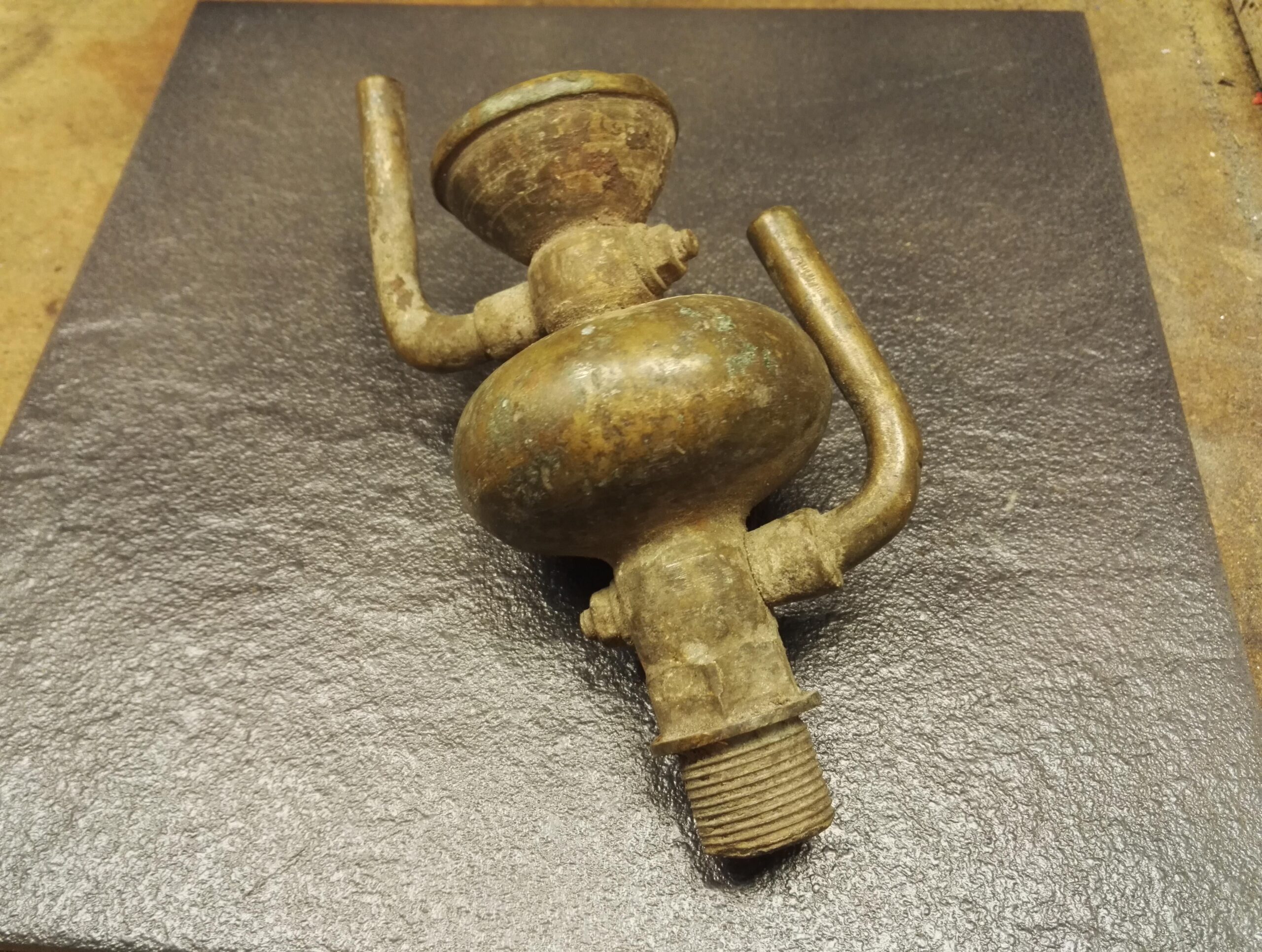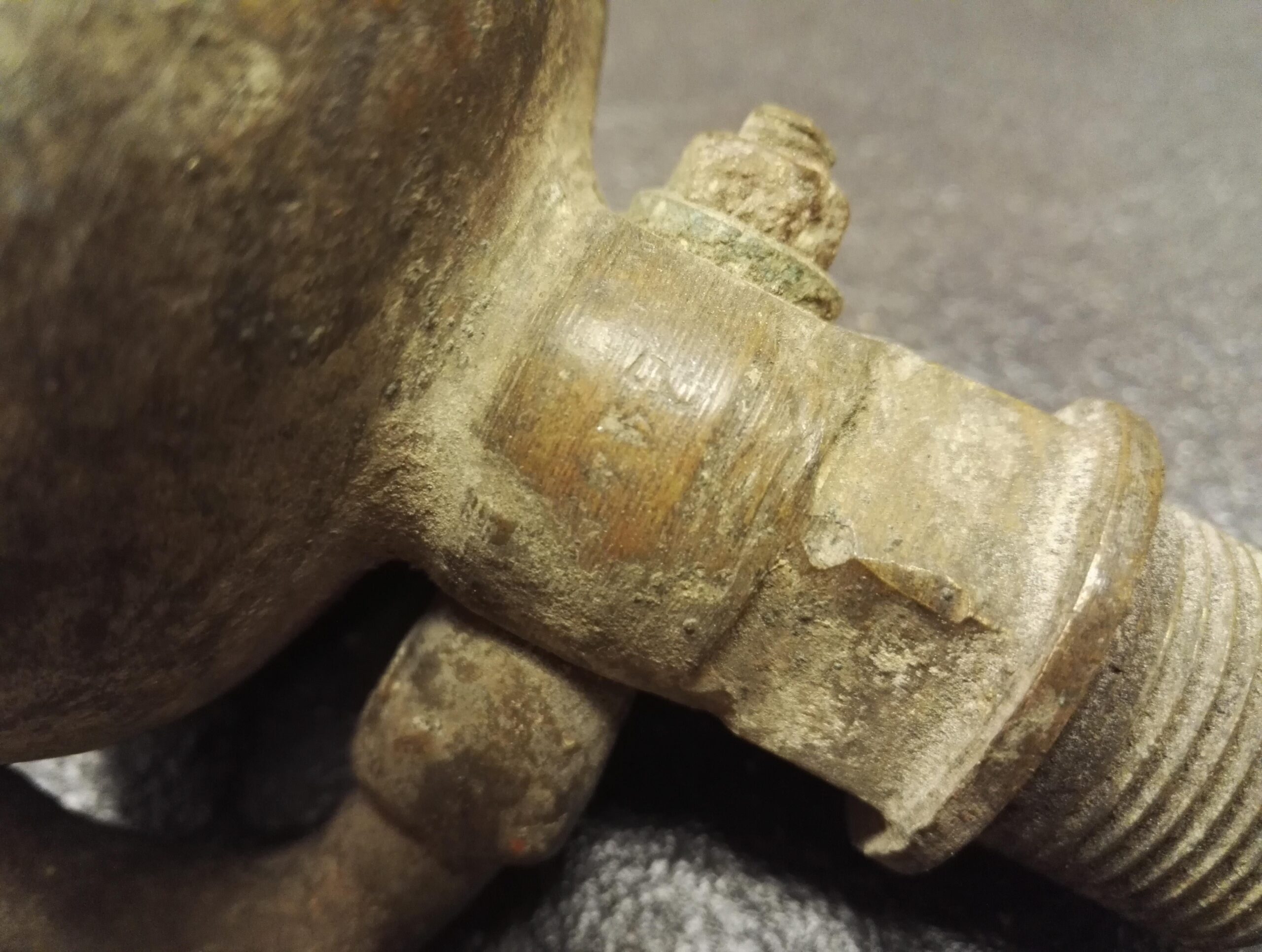You saw this and your brain did the automatic double-take.
Because whatever it is, it looks like part of plumbing… but not like any plumbing most people have ever installed.
What people are seeing
The photos keep popping up in tool groups and “what is this thing” threads.
It’s a chunky brass/bronze piece with:
a threaded male end like it’s meant to screw into a pipe or hose line
a bulb-shaped chamber in the middle
two bent upright tubes/arms on either side
a little cap/bonnet on top
and stamped letters + numbers on the body (usually looks like a maker’s mark or pressure/size code)
Old-school, heavy, a little corroded — the kind of thing that feels like it came from a basement that hasn’t been opened since the 1950s.
Why this is going viral
Because it hits the perfect “I almost know this” nerve.
At first glance your brain goes:
“Water spigot… valve… maybe sprinkler?”
But then you notice the weird geometry:
why the round pressure-bulb?
why the two upward arms instead of one outlet?
what’s with the top cap that looks like it’s meant to vent something?
That mismatch is what makes people post it.
It looks familiar, but not enough to place… and once you can’t place it, you can’t stop thinking about it.
The most likely explanation

This isn’t a simple faucet head.
It’s an old plumbing safety/flow-control assembly — the kind used to protect lines from backflow or pressure surges.
The shape lines up with devices like:
vacuum breakers / anti-siphon valves (prevent dirty water from being sucked backward into clean water lines)
backflow preventer bodies (common on outdoor irrigation setups and older industrial plumbing)
pressure regulation / relief valves (the bulb chamber smooths pressure changes)
Those two bent tubes are typically inlet/outlet or vent paths, positioned upward to keep water from draining back through them and to allow air to break a siphon.
The top bonnet is often where the internal spring/diaphragm lives — the moving part that opens when pressure changes.
And the letters/numbers?
That’s usually:
manufacturer mark,
pipe size (½”, ¾”),
pressure rating, or
model code.
In other words: it looks like a spigot because it connects like one, but its job is protection, not just turning water on/off.
One more detail people miss
These things are way more common than people realize — you just don’t see them up close because they’re usually:
buried in irrigation boxes,
bolted behind boilers,
tucked near old pumps, or
mounted on industrial lines.
Once they’re removed from that context, they look like a bizarre artifact from a different era.
The internet tends to go “cursed antique” or “mystery weapon.”
Reality is more boring — but also kind of cool:
this is a reminder that older plumbing was built with big, mechanical safety parts you could actually hold in your hand.
